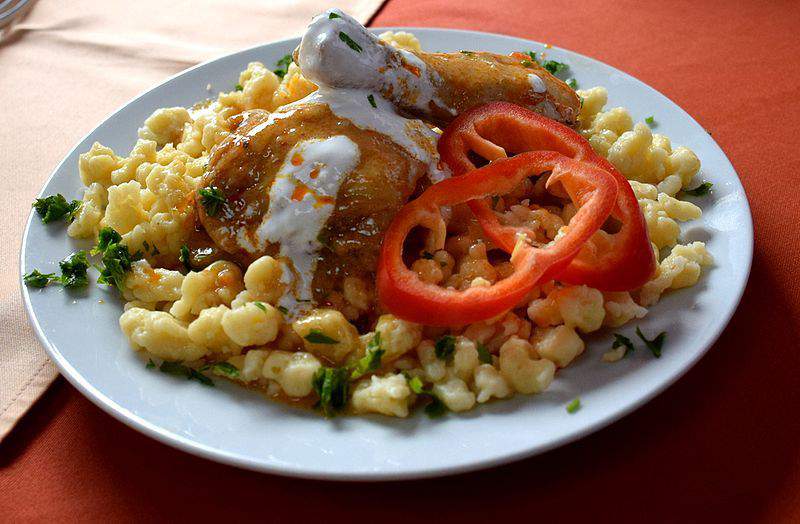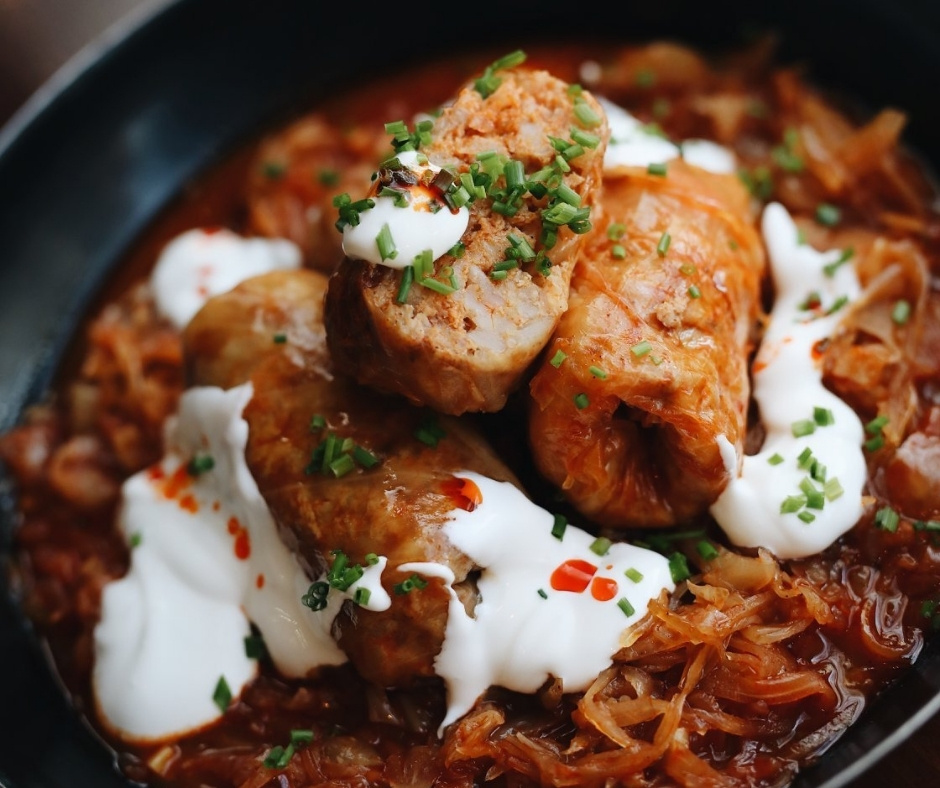These are the most photographed Hungarian dishes

Hungarian gastronomy is special. There are many famous Hungarian dishes. But which ones are the most photographed? Our article will tell you.
The most popular dishes
A research was carried out by the Dutch company Thuisbezorgd.nl. The research looked at which foods were the most photographed and which foods are the most often displayed on Instagram.
Perhaps unsurprisingly, pizza topped the list. There were 86,380,378 posts about pizza. Sushi finished in second place with 45,136,853 posts. Hamburger made it to third place with 33,054,250 Instagram photos. That means Italian, Asian and American dishes are on the podium. But what about Hungarian gastronomy?
Lecsó

There are many types of lecsó in the world, but perhaps the French version of ratatouille is the most famous. The Hungarian version is also a vegetable ragout. The main ingredients are tomatoes, peppers and onions. Bacon and sausages are added sometimes for extra flavour. Hungarian people can be put into two categories: there are those who eat lecsó with eggs while the rest prefers this wholesome dish without it.
Chicken paprika

Chicken paprikash, also known as chicken with paprika, is a popular Hungarian dish. It contains paprika, pepper, garlic, green pepper, tomatoes, sour cream and meat. The dish is less than 200 years old. It was really famous among the peasants of the Lowlands. Back then, it was made from beef or sheep, which was replaced by chicken.
Pogácsa

The pogácsa is a small round savoury pastry. There are several varieties, including potato, butter, sheep’s cheese, cabbage and cheese. Kristóf Sirmai, a Piarist monk, first wrote down a recipe for the Hungarian scones in his cookbook at the end of the 18th century. The ash-fried scones also appear in several Hungarian folk tales. The hero often receives scones as a farewell gift before he sets on a journey.
Pörkölt — Stew

Pörkölt is one of the most popular Hungarian dishes that are made with juicy paprika. It started out as a shepherd’s dish in the Lowlands, and writers from the 1780s onwards keep mentioning it in their work. The bases of the stew are ground peppers and diced beef.
Stuffed Cabbage

Stuffed cabbage consists of sauerkraut, minced meat, rice, eggs and sour cream. It is a typical dish of Hungarian cuisine, which originates both from the Lowlands and Transylvania. Stuffed cabbage is the predecessor of cabbage meat which was already widely consumed in the second half of the 1600s.
The top 10 most photographed Hungarian dishes on Instagram also include fish soup, cottage cheese dumplings, meat soup, goulash soup and casserole potatoes.
Source:








It is a typical dish of Hungarian cuisine, which originates both from the Lowlands and Transylvania – Nonsense. Its origins are from the ancient Middle East. East. But the DNH over active Spam filter won’t let me post the link to the article explaining the history of cabbage rolls.
Dear Kati, try to post the link again.
Hi Eleonora, my attempt at the link was foiled again by your spam filter. The article is called Comforting cabbage rolls have International history, by Catherine Kaufman, Jan 2014.
Hi Kati, we apologize for this inconvenience. I can’t even see your previous message in the spam folder. I’ll check the article 🙂
Like many French people, I am offended when there is a comparison drawn between our beloved Ratatouille and that “snack” that is called Lecsó, which by comparison is just “fast food”. Making a Ratatouille is a labour of love and cannot be rushed. The onion and tomato base takes about 30-40 minutes to cook. The peppers have to be blistered in the oven and then peeled and chopped and added. Thyme and Saffron are added. Then the sliced courgettes (yellow and green) and aubergines are added. The whole lot must next go into a low oven (140c) for 2 hours with a lid on, then a further 30 minutes with the lid off. The much inferior Lecsó on the other hand only needs about 20 minutes cooking time and has a totally different texture. A snack, as I said.
Lecso is a dish that anyone can afford to make, at least in season, and can find time for. A quick meal of summer delights is what I consider it. I never make any food that uses an oven since that uses a huge amount of power just to heat up. All my meals have to be done in the microwave or a stir-fry pot on the element. Not only is that budget friendly, but it is environmentally responsible. Every decision now a days should make THAT the priority & that includes eating locally sourced or home grown items, cooked economically. Lecso wins. And most people are not so high on the social order that they need the delicious but fussy ratatouille in times when women go to work outside the home & quick meals are a must.
@Kate, in France we usually cook several dishes in the oven at the same time, ones that require a similar temperature. That is energy saving. Also, most people now days have ovens with timers so that they turn off (and on) automatically. I use a Gaggenau series 400.